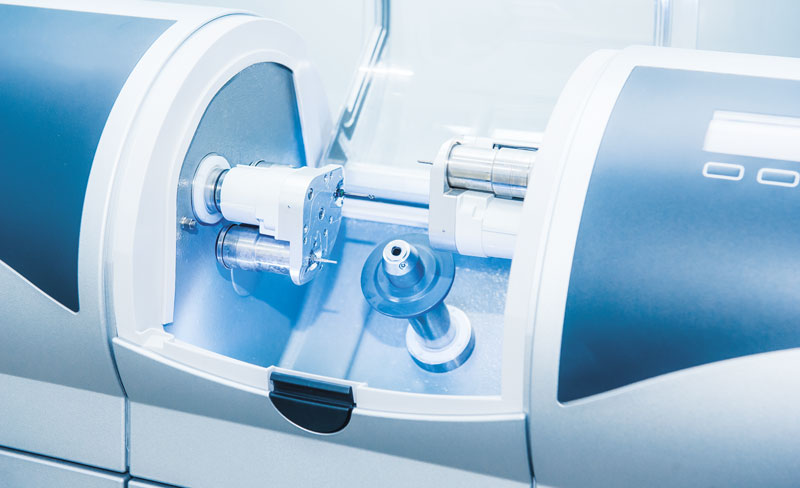The power of 3D
Digital dentistry in focus at ADI Team Congress 2019
“Right now we are truly at a crossroads for the way in which we diagnose and deliver dental implant therapy,” says David Guichet, a leading clinician from the US. “We are combining radiographic data with surface scan data to treatment plan in a 3D environment. Although guided surgery has been around for 10-15 years, the growth in ubiquitous, highly accurate, low-cost 3D design and manufacturing technologies has made the technique more predictable and accessible. The skills developed for freehand surgery remain essential for adjustments and improvement throughout the process, but digital guides streamline the dental implant workflow, ensuring a very precise surgery.”
David has fulfilled roles as programme chair for the Academy of Osseointegration, the American College of Prosthodontists and the Pacific Coast Society for Prosthodontics. He is also Past President of the Osseointegration Foundation and the Orange County Dental Society, as well as the previous Director of Continuing Professional Education for the American College of Prosthodontics. He currently runs a prosthodontic practice in Orange and Newport Beach California and is President of the Pacific Coast Society for Prosthodontics.
David will be presenting a session entitled “A Critical Look at Digital Treatment Protocols and performance of CAD/CAM” as part of the plenary programme at the ADI Team Congress 2019. Here he explains the key areas he will cover.
“First, I will talk about open versus closed CAD system architecture. Historically, manufacturers closed their systems in order to control the outcome, but open technologies enable clinicians to select all the components they perceive to be the best for each patient, affording greater interoperability and versatility.
“I will also consider how the use of intraoral scanning as a diagnostic aid is changing the way we do things on a daily basis. As of this year, my practice started scanning every new patient and we have been surprised by how this affected our awareness of each patient’s condition. By visualising their anatomy in 3D, we can combine restorative, periodontal, functional and occlusal data to ensure a comprehensive and highly accurate diagnosis. The treatment sequence is therefore enhanced as it is better aligned with the patient’s best interests.
“In addition, there is great value in sharing this data with the patient to improve their understanding and satisfaction with the outcome. When they are involved with making any necessary adjustments to their restorations through the digital design and treatment-planning phase, it becomes much easier to meet the demands of even the most aesthetically conscious patients.
“Materials contribute to this as well. One of the main advantages of digital dentistry is the patient’s ability to see and accept the result, before it is produced. I will share five-year data on zirconia reconstructions from over 2,000 minimally veneered zirconia units as part of my lecture. I will show how the results aid recommendations for the utilisation of carefully designed veneering porcelain for optimal aesthetics, while retaining favourable fit, form and tissue response.
“With modern digital design and materials, the restorations we produce today are worlds apart from those we could create in the past, making it simpler to treat aesthetically demanding patients.”
Echoing the team ethos of the ADI Team Congress 2019, David highlights the importance of establishing strong relationships between practice and laboratory:
“Digital design has enhanced the artistic performance of the laboratory – the majority of the process is completed using automated digital programmes and this allows more time for the technician to focus on the final artistic touches for more aesthetic outcomes. Plus, virtual wax-ups enable instantaneous adjustments, while in the conventional environment simple changes could require many hours of work!
“There is tremendous power in digital design. To be aware of the strengths of CAD/CAM today is to unlock the potential to treat patients in a better way. It is therefore important to establish an effective partnership with a skilled laboratory team in order to truly utilise this power.
“By partnering with a skilled technical team, clinicians can share the responsibility of the digital planning, maintaining their preferred methods of working while still making use of cutting-edge technologies. There are many technicians across the profession who can now take the burden of surgical planning off the clinician, which has greatly facilitated the increased utilisation of guided surgery. In this way, clinicians can minimise their investment of time and energy, while still achieving the best possible treatment outcomes for patients.
“Effective use of digital dentistry should be consistent with sound biologic principles – it shouldn’t introduce any untested materials or processes. It takes advantage of the best dentistry has to offer and simply makes it more efficient and accessible. It provides a bright future for clinicians and patients across the world.”
David will join an array of internationally renowned speakers at the ADI Team Congress 2019, who will share their extensive knowledge and experience in a wide range of topics. For all the information you need on harnessing the power of 3D digital dentistry and much, much more, make sure you don’t miss out and book your place today!
For more information or to book please visit www.adi.org.uk/congress19
ADI members get significantly reduced rates, join online today.
ADI Team Congress 2019
Shaping the Future of Dental Implantology: Techniques – Technology – Teamwork
2 – 4 May 2019, EICC, Edinburgh


Comments are closed here.